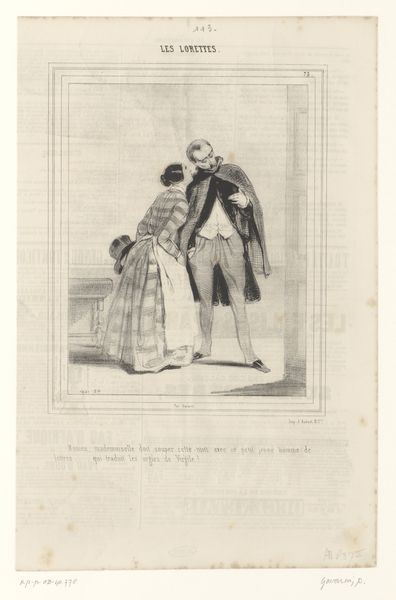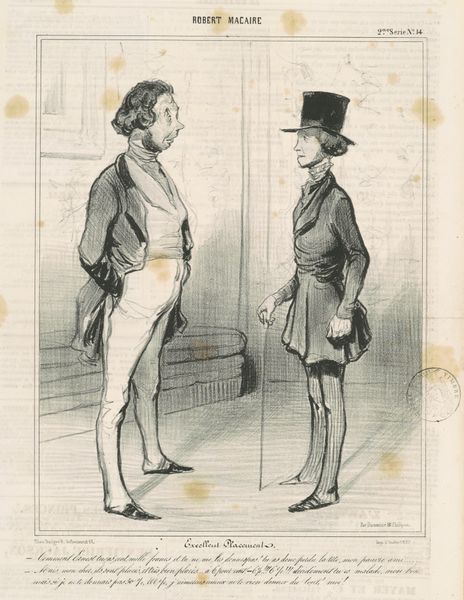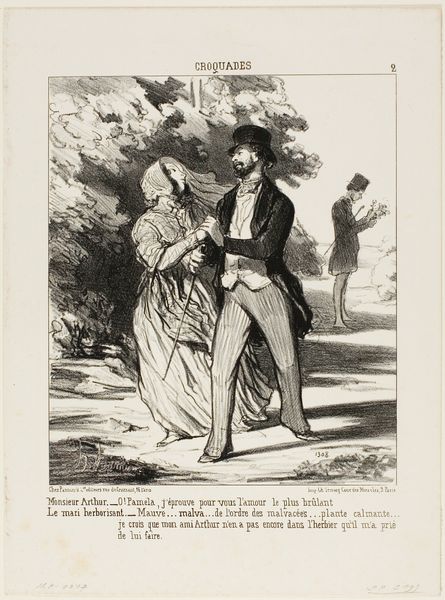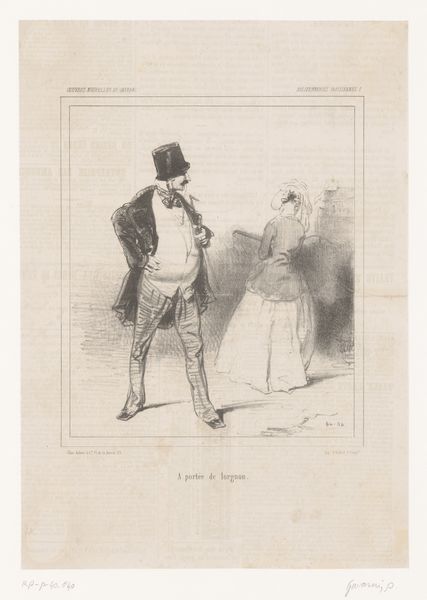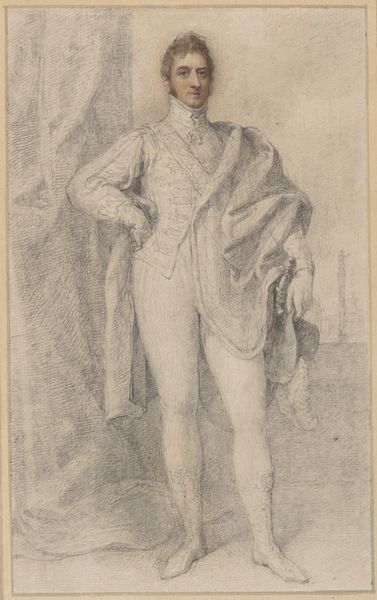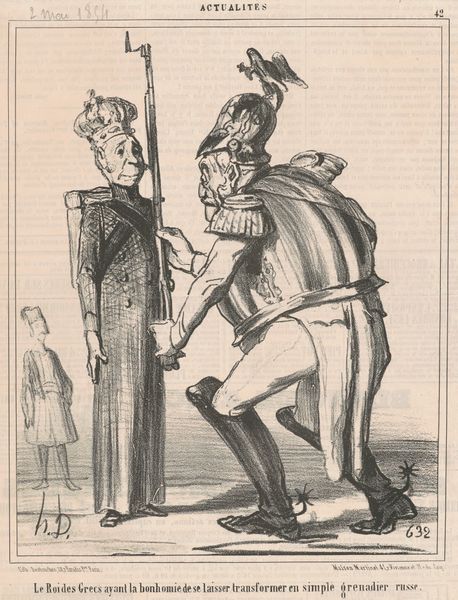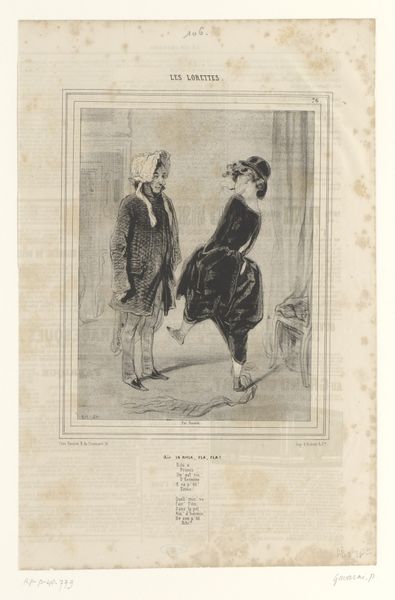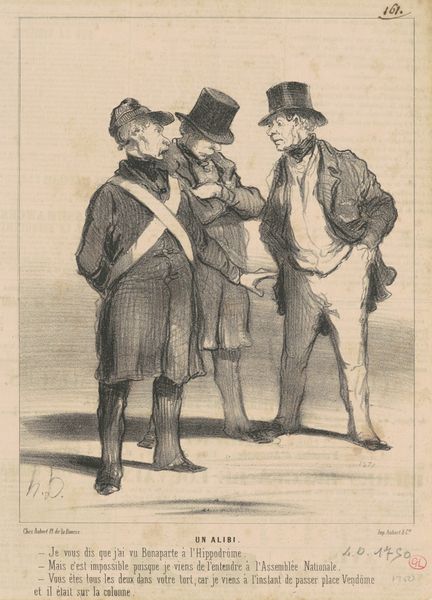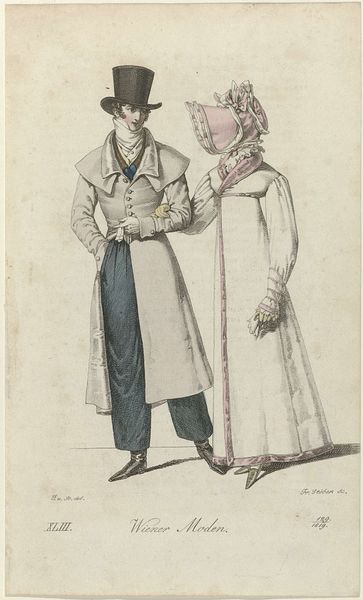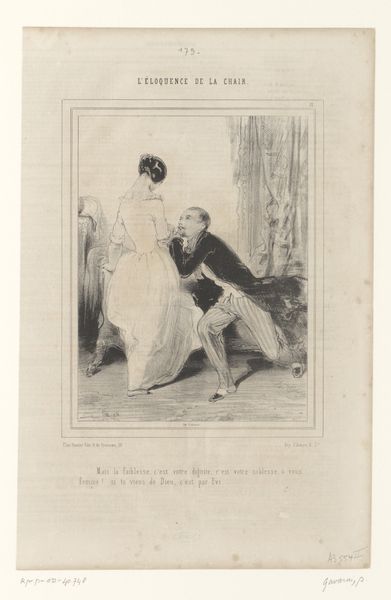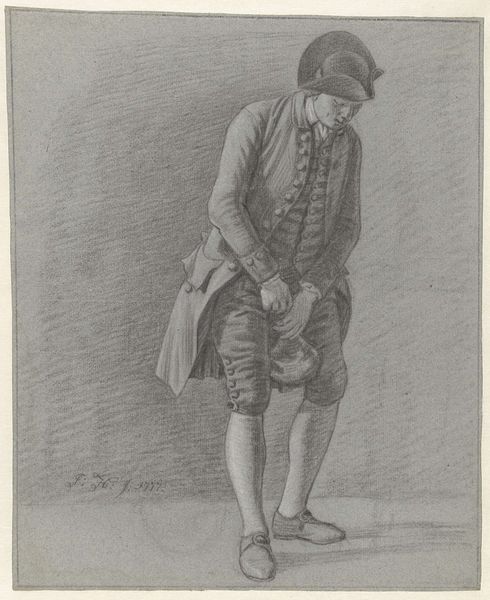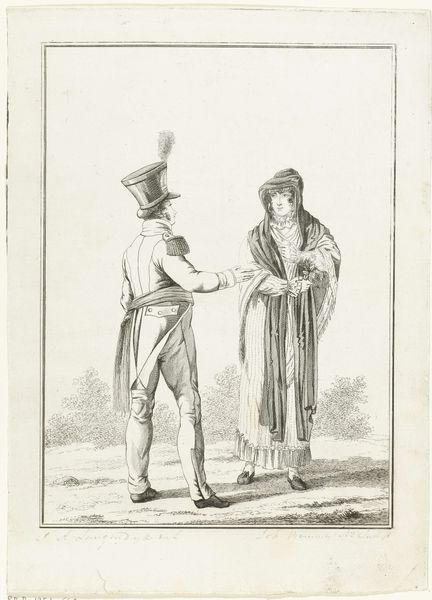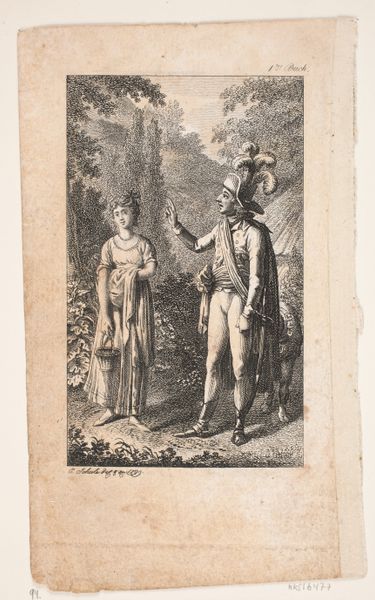
Study for a Portrait of an Officer and His Wife 1751 - 1763
0:00
0:00
drawing, pencil
#
portrait
#
drawing
#
neoclacissism
#
figuration
#
form
#
group-portraits
#
pencil
#
men
#
line
#
portrait drawing
#
genre-painting
#
history-painting
#
academic-art
Dimensions: sheet: 18 x 11 5/8 in. (45.7 x 29.5 cm), irreg.
Copyright: Public Domain
Curator: Arthur Devis created this graphite drawing titled "Study for a Portrait of an Officer and His Wife" sometime between 1751 and 1763. It's currently held at The Met. What jumps out at you? Editor: Bleak elegance! The detail in their clothing, offset against the almost ghostly simplicity of the background... it's like a haunting sketch of aspiration. Curator: It does possess a certain austere quality, doesn't it? The precision of line, especially in the rendering of the garments, speaks to the values of the Neoclassical movement emerging at the time, its focus on form. Look closely; you can almost feel the textures rendered just with pencil. Editor: That attention to detail...it feels inherently tied to labor. Who was crafting these clothes, these wigs, the very instruments of display? And what does it mean to freeze that labor within the upper class consumption habits this sketch seems to advertise? It makes me think of the entire fashion apparatus of the period! Curator: That's a crucial perspective. These sketches offered potential clients a preview of finished portraits— a means of commodifying status, almost. But beyond commerce, don't you feel a yearning in their postures? They’re touching without touching. Editor: Well, think about how reliant these sorts of displays were on societal constraint, literally shaping bodies, restricting movement. Curator: Yet within those confines, Devis still captured something…a wistful dignity, a spark of individuality simmering under the surface. He captures them like butterflies pinned and framed under glass... each detail frozen on the page. Editor: Precisely. And in viewing the output – in museums, publications, wherever – we can easily overlook the physical work needed to create the portraits themselves. Let's talk more about those artisans and the systems they worked within, I think. Curator: Absolutely. It reminds us that history is never a straightforward portrait but always the intricate weaving of many hands.
Comments
No comments
Be the first to comment and join the conversation on the ultimate creative platform.
